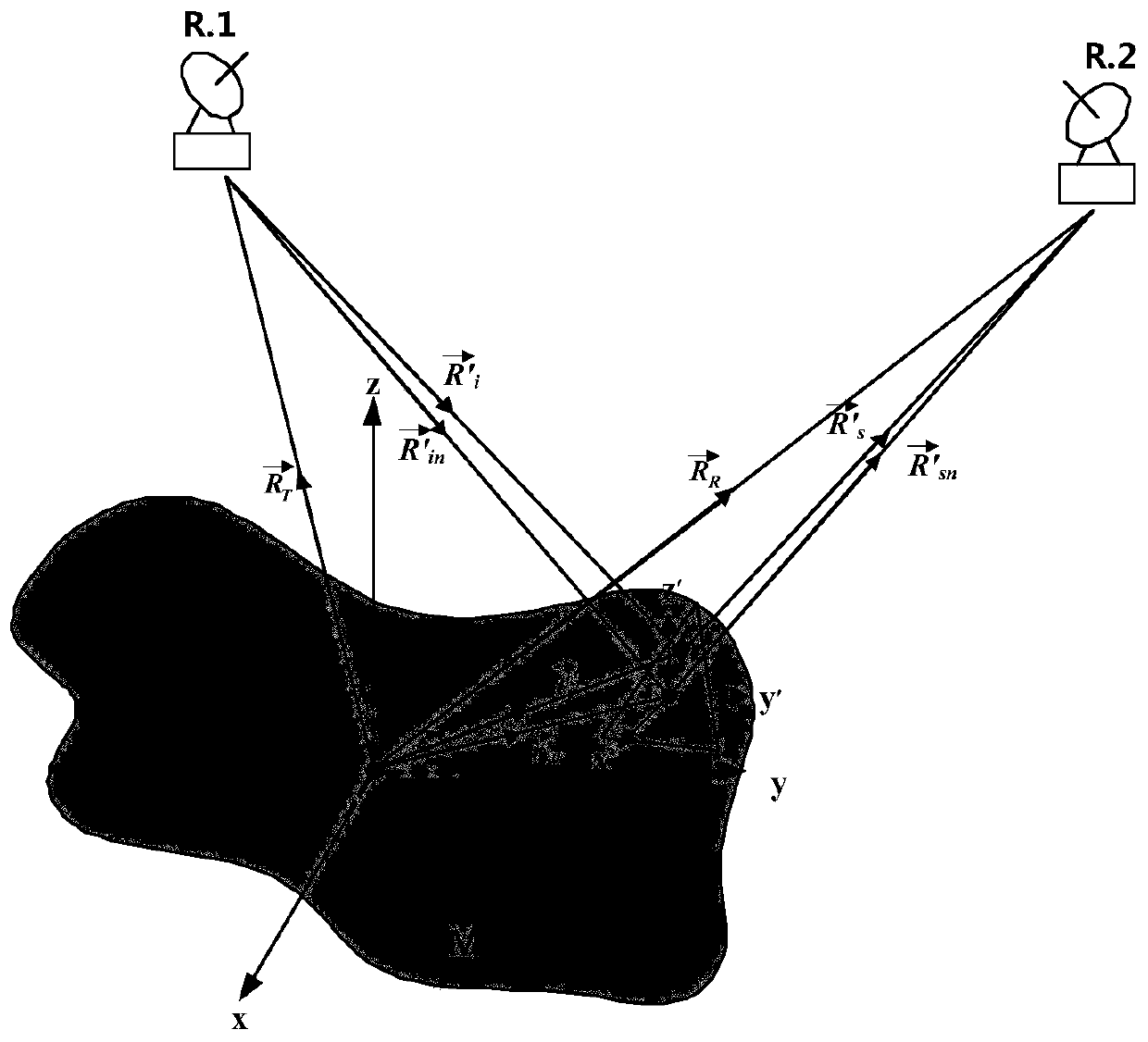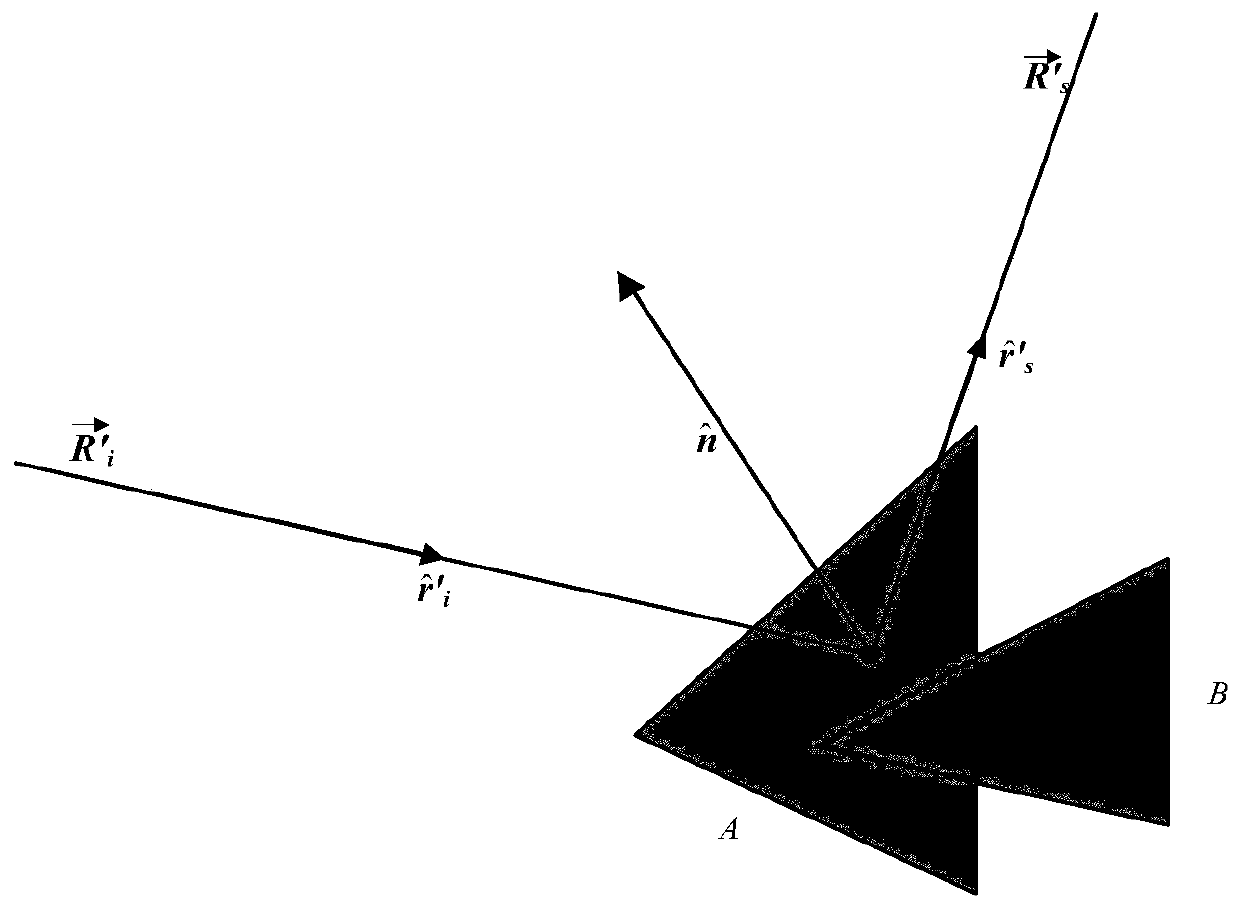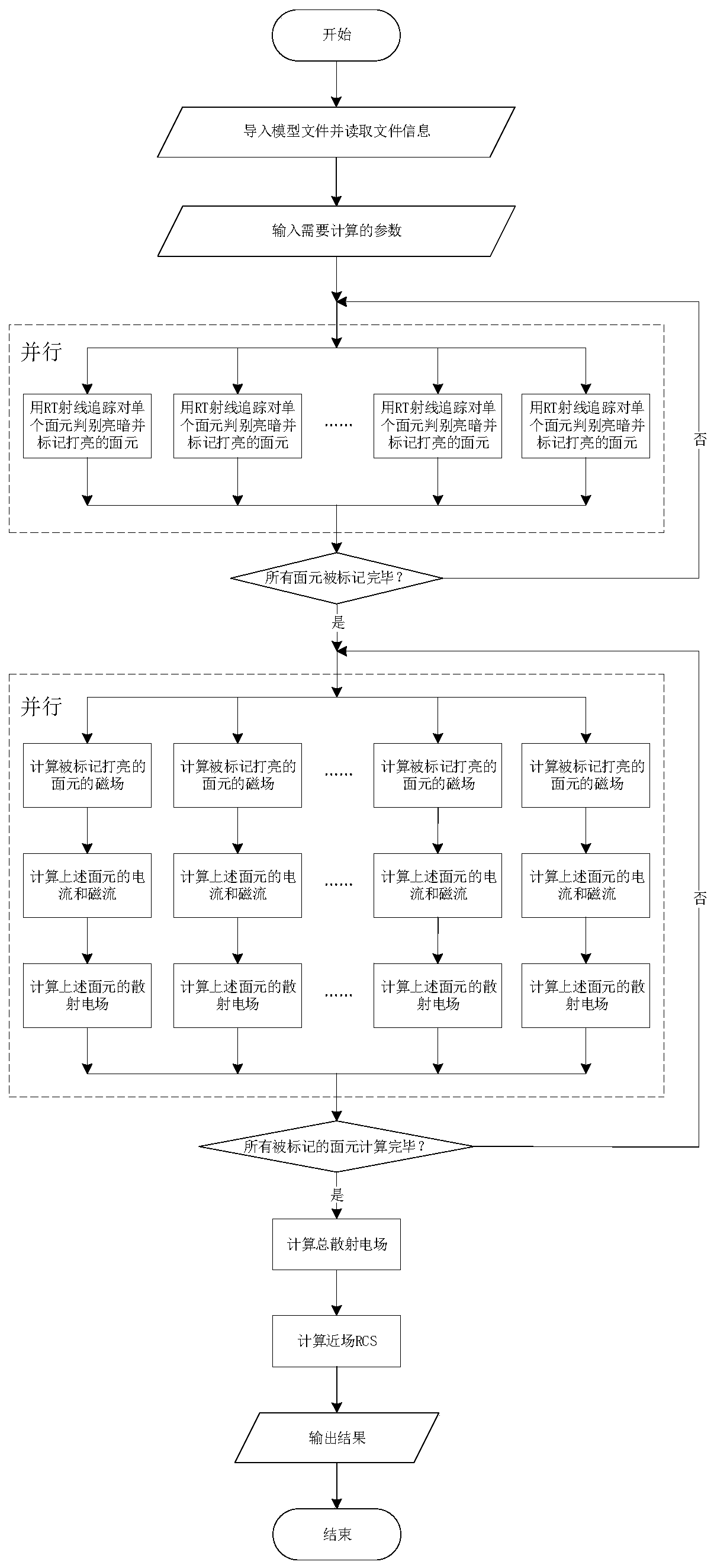Near-field electromagnetic scattering simulation method for super-electric large-size scale target
An electrically large-scale, near-field electromagnetic technology, applied in design optimization/simulation, 3D modeling, image data processing, etc., can solve problems such as difficult to satisfy, save time, simplify the modeling process, and avoid the surface element normal process. Effect
- Summary
- Abstract
- Description
- Claims
- Application Information
AI Technical Summary
Problems solved by technology
Method used
Image
Examples
Embodiment 1
[0048] This embodiment provides a near-field electromagnetic scattering simulation method for ultra-electric large-scale targets, and the specific steps are as follows:
[0049] Step 1: Use the 3D modeling method based on triangular surface element mesh to model, and export it as a model in the general STL (StereoLithography) format for future use.
[0050] Step 2, import the above-mentioned model file in STL format into a Graphics Processing Unit (GPU) for calculation, and read the coordinate information and surface normal information of each triangular surface element constituting the radar target.
[0051] Step 3, input the parameters to be calculated; the parameters to be calculated include radar system type, radar wave frequency f, incident angle θ, azimuth angle The distance R between the transmitting radar and the center of the target T , the distance R between the receiving radar and the center of the target R , as well as the number of Monte Carlo (MC) simulations ...
Embodiment 2
[0077] The simulation method provided by embodiment 1 is tested: as Figure 4 A cargo ship model is provided with a bounding box of 135m in length, 16m in width and 25m in height, and the following simulation tests are carried out on it: a monostatic radar with a working mode of 300MHz, the incident angle ranges from 45° to 90°, and the azimuth angle ranges from 0 to 360°, the distance from the radar to the target center is r=1km (the simulation result is marked as RCS-1km) and r=10km (the simulation result is marked as RCS-10km).
[0078] Comparison case: the distances from the radar to the target center are r=1km and r=10km respectively, and the conventional far-field scattering simulation test is adopted, and the far-field simulation scattering results are marked as RCS-ff.
PUM
 Login to View More
Login to View More Abstract
Description
Claims
Application Information
 Login to View More
Login to View More - R&D
- Intellectual Property
- Life Sciences
- Materials
- Tech Scout
- Unparalleled Data Quality
- Higher Quality Content
- 60% Fewer Hallucinations
Browse by: Latest US Patents, China's latest patents, Technical Efficacy Thesaurus, Application Domain, Technology Topic, Popular Technical Reports.
© 2025 PatSnap. All rights reserved.Legal|Privacy policy|Modern Slavery Act Transparency Statement|Sitemap|About US| Contact US: help@patsnap.com



